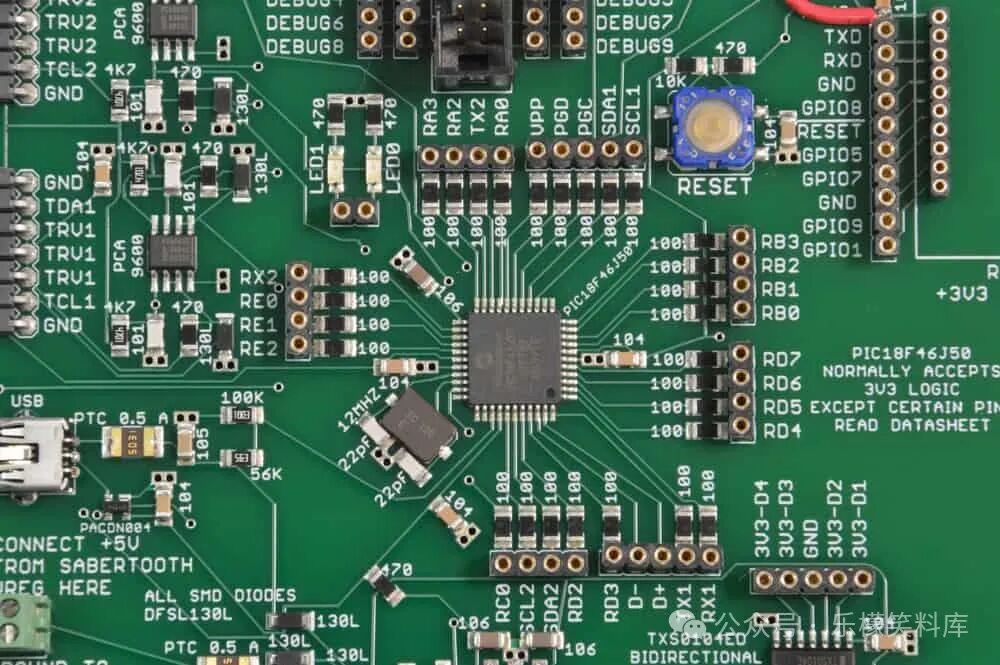With the rapid development of technologies such as 5G communication, millimeter-wave radar, and high-speed computing, microwave circuits impose higher requirements on PCB design. Traditional surface mount technology (SMT) shows significant limitations in high-frequency applications, particularly with the increasingly prominent performance degradation issues caused by parasitic effects. This article will delve into the embedded design technology of PCB microwave passive components and its performance optimization methods.Basic Principles of Embedded DesignEmbedded technology essentially integrates passive components such as capacitors, inductors, and resonators directly into the internal layers of the PCB, rather than using traditional surface mounting. This method effectively reduces interconnect lengths, lowers parasitic inductance and capacitance, and simultaneously increases circuit density and reliability. In the 4-40GHz frequency range, measurements indicate that embedded design can reduce insertion loss by 0.5-1.2dB, significantly optimizing RF performance.For complex passive components such as dielectric filters and couplers, embedded design must adhere to the following basic guidelines:Precise control of impedance matching, ensuring VSWR < 1.2Design of electromagnetic shielding layers to avoid crosstalkOptimization of via layout to reduce the impact of via inductanceMaterial selection and process controlThe choice of PCB substrate for microwave frequency bands is crucial. The stability of the dielectric constant (εr) and loss tangent (tanδ) directly affects component performance. Low-loss materials such as Rogers RO4350B and Taconic RF-35 perform excellently in high-frequency applications, but process compatibility and cost must also be considered. Our research found that for multilayer mixed-press structures, adopting a selective step-lamination scheme can balance performance and cost.In embedded processes, etching precision and alignment accuracy directly affect microwave performance. For 50Ω microstrip lines, every 10μm increase in line width deviation results in an approximate 1.5Ω change in characteristic impedance, directly impacting the reflection coefficient. Therefore, the process capability index Cpk should be maintained above 1.33 to ensure the stability of critical dimensions. Electromagnetic Simulation and Performance OptimizationEmbedded component design relies on precise electromagnetic field simulation. Traditional lumped parameter models lack accuracy at high frequencies, necessitating the use of full-wave analysis tools such as HFSS and CST. Key optimization parameters include:Q factor optimization: By adjusting conductor width, layer spacing, and metallized via spacing, the Q factor of microstrip resonators can be improved by 15-30%Precise control of coupling coefficients: For couplers/filters, achieve ±0.05dB insertion loss accuracy through optimized stacking structuresTemperature stability: Compensation design ensures frequency drift < 50ppm/°C within the -40°C to +85°C temperature rangeIn practical engineering, embedded inductors are widely used in applications below 20GHz, while embedded capacitors excel in decoupling networks due to their low ESR and ESL characteristics. The embedded balun structure we designed improved phase imbalance by 40% at 26GHz compared to traditional SMT baluns.Testing and Verification MethodsTesting of microwave passive components requires special attention to calibration techniques and fixture design. Using SOLT (Short-Open-Load-Through) or TRL (Thru-Reflect-Line) calibration methods, along with multi-line differential testing structures, can accurately characterize embedded component characteristics. Particularly for high Q resonant circuits, the energy conservation method should be used to measure quality factor, avoiding errors associated with the traditional -3dB bandwidth method in high Q scenarios.ConclusionThe embedded design technology of PCB microwave passive components is an effective way to address the performance bottlenecks of high-frequency circuits. Through reasonable material selection, precise process control, and comprehensive electromagnetic simulation optimization, the performance metrics of microwave circuits can be significantly enhanced. With the continuous advancement of semiconductor and PCB processes, embedded technology will play an increasingly important role in millimeter-wave and terahertz applications.Future research directions will focus on the heterogeneous integration of embedded passive components with active devices, as well as automated parameter optimization based on advanced artificial intelligence algorithms, further promoting the miniaturization and high-performance development of microwave circuits.
Electromagnetic Simulation and Performance OptimizationEmbedded component design relies on precise electromagnetic field simulation. Traditional lumped parameter models lack accuracy at high frequencies, necessitating the use of full-wave analysis tools such as HFSS and CST. Key optimization parameters include:Q factor optimization: By adjusting conductor width, layer spacing, and metallized via spacing, the Q factor of microstrip resonators can be improved by 15-30%Precise control of coupling coefficients: For couplers/filters, achieve ±0.05dB insertion loss accuracy through optimized stacking structuresTemperature stability: Compensation design ensures frequency drift < 50ppm/°C within the -40°C to +85°C temperature rangeIn practical engineering, embedded inductors are widely used in applications below 20GHz, while embedded capacitors excel in decoupling networks due to their low ESR and ESL characteristics. The embedded balun structure we designed improved phase imbalance by 40% at 26GHz compared to traditional SMT baluns.Testing and Verification MethodsTesting of microwave passive components requires special attention to calibration techniques and fixture design. Using SOLT (Short-Open-Load-Through) or TRL (Thru-Reflect-Line) calibration methods, along with multi-line differential testing structures, can accurately characterize embedded component characteristics. Particularly for high Q resonant circuits, the energy conservation method should be used to measure quality factor, avoiding errors associated with the traditional -3dB bandwidth method in high Q scenarios.ConclusionThe embedded design technology of PCB microwave passive components is an effective way to address the performance bottlenecks of high-frequency circuits. Through reasonable material selection, precise process control, and comprehensive electromagnetic simulation optimization, the performance metrics of microwave circuits can be significantly enhanced. With the continuous advancement of semiconductor and PCB processes, embedded technology will play an increasingly important role in millimeter-wave and terahertz applications.Future research directions will focus on the heterogeneous integration of embedded passive components with active devices, as well as automated parameter optimization based on advanced artificial intelligence algorithms, further promoting the miniaturization and high-performance development of microwave circuits.